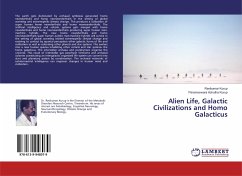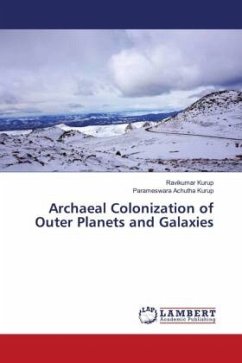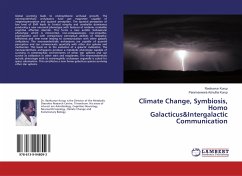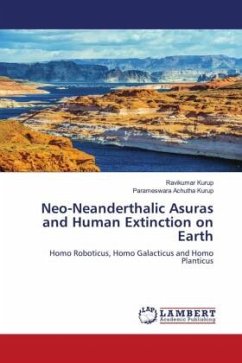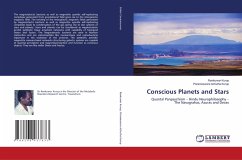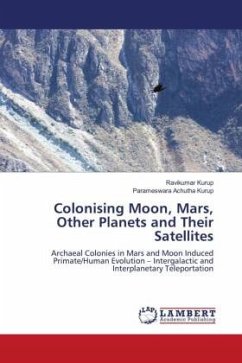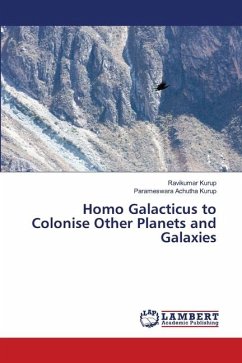
Homo Galacticus to Colonise Other Planets and Galaxies
Versandkostenfrei!
Versandfertig in 6-10 Tagen
76,99 €
inkl. MwSt.

PAYBACK Punkte
38 °P sammeln!
Global warming leads to endosymbiotic archaeal growth. The endosymbiotic archaea develops into cell organelle called archaeaons. This produces a new human phenotype called Homo neoneanderthalis. The new organelle that are developed can withstand climate change and fix carbon dioxide and ammonia leading to endogenous synthesis of carbohydrates and protein. The Homo neoneanderthalis is a new metabolic phenotype that can survive in extremes of climate produced by global warming. The neoneanderthalic archaeaons are capable of fixing carbon dioxide and oxygen, using ammonia for energetics and capab...
Global warming leads to endosymbiotic archaeal growth. The endosymbiotic archaea develops into cell organelle called archaeaons. This produces a new human phenotype called Homo neoneanderthalis. The new organelle that are developed can withstand climate change and fix carbon dioxide and ammonia leading to endogenous synthesis of carbohydrates and protein. The Homo neoneanderthalis is a new metabolic phenotype that can survive in extremes of climate produced by global warming. The neoneanderthalic archaeaons are capable of fixing carbon dioxide and oxygen, using ammonia for energetics and capable of biological fission and fusion reactions. The fixing of carbon dioxide leads to water as a by-product. This generates endogenous water in the neoneanderthalic system helping to survive extremophilic climatic conditions. This creates a new system of energetics helping the Neoneanderthal survives in extremes of climate and can colonise other planets and galaxies forming microbial civilizations. They have quantal perception and are capable of wave-particle existence and teleportation.






